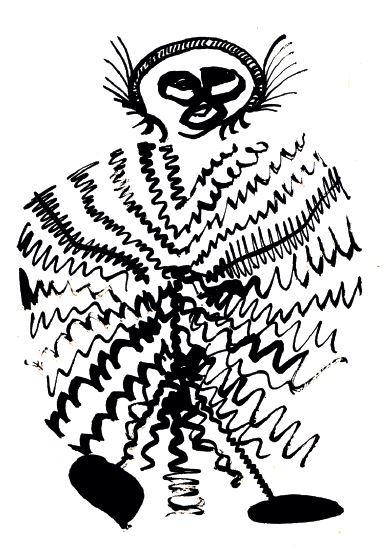A translation of a recent dedication by Joël Gayraud for Michel Zimbacca. The original french text follows below.
For Michel Zimbacca
In reply to the stifling question from the teacher: “Well kids! What do you want to be when you grow up?” one raises his hand and says: “Hairdresser!”, “Pilot”, “Lawyer!” “Firefighter!”… Only a single child, caught up in his dreams, remains silent at his desk. Intrigued, the teacher asks him: “Come on now, Zimbacca, don’t you have any idea about your future?” Yanked back to the dull order of reality, Michel replies: “Yes. I would like to be a monkey.” The whole class is speechless. The teacher exclaims in dismay: “A monkey is not a job!”. “No,” the child replies, “but jobs don’t interest me. I would prefer to be a monkey than have a job.” A general outburst of laughter. Those kids who aped the adults did not suspect that Michel was not aping anyone, and in so doing, demonstrated his unshakeable singularity. In the face of mockery he did not budge in his choice of vocation.
It was about three years ago, after the publication of his collection Sans cent vierges ni virgules, that Michel told me about this childhood memory in which playfulness joined a heightened sense of freedom. This monkey, which represented an ideal of the self free from all social utility, was reproducer by him in the form of a green effigy, which he sometimes affixed as a seal to dedications signed for his friends.
Because Michel Zimbacca had (an increasingly rare thing nowadays) friends. In discussions he listened a lot, spoke little, and suddenly, at the right moment, and with a steady voice, he shot out like an arrow with the perfect word. When Guy Girard and I were preparing the Saint-Cirq exhibition, we found several untitled drawings. We would show him the picture, he would look at it for a few moments, then give it a name which was eminently suitable. As if he were the first man, naming the animals.
One such success was the title of his first solo exhibition at Galerie l’Usine in 2017: “Libre Moiseau”. Not content with being mischievous and playful like the monkey, Michel knew he was free to explore all dimensions of life, exempt from the spirit of seriousness, like a bird which laughs at gravity. Free to do or not to do. In particular, free to put on none of those little poses that artists like to adopt, nor any of the poor ambitions that torment them: to parade, to succeed, to be recognized, if necessary with a rattle dangling from their buttonhole. Before his tenth decade, he had never exhibited his works other than in rare group exhibitions, where they joined those of his surrealist friends. He had offered some of them to his partner, to his relatives, others illuminated his walls, including the extraordinary object The Present of the Present, King-Kong’s homage to August-Ferdinand Moebius. King Kong, the ape of the apes, paying tribute to topology. But we also found drawings and paintings stored in boxes, forgotten under the bed. Found to the great joy of their author, who believed them lost.
As he was sparing in words, Michel preferred to think in pictures. They flowed from the point of his pen in his poems, which were collected, as always, at the instigation of his friends—only twice, and late. They crystallized in his films, the most famous of which, L’Invention du monde [The Invention of the World], gave us no less than a new genesis, a true and palpable genesis where spirits and gods become none other than the figurines, masks and myths created by man like so many “nets that he himself has cast and in which he for better or worse catches himself”.
Born on the lunar shores of the Sea of Tranquility, handsome and benevolent like the totem owl of the Haida people, but capable in very rare moments of metamorphosis into a thunderbird, Michel Zimbacca, who was the same age as surrealism itself, always remained faithful to his first marvels. It was in every moment of his life that he won his eternal freedom.
Joël Gayraud, April 9, 2021
*
Pour Michel Zimbacca
À l’accablante question du maître d’école : « Eh bien ! mes petits, que voulez-vous faire plus tard ? », c’est à qui lève la main et déclare : « Coiffeur ! », « Aviateur ! », « Avocat ! », « Pompier ! » … Seul un enfant enveloppé dans ses rêves demeure coi sur son banc. Intrigué, le maître lui demande : « Allons, Zimbacca, tu n’as pas une petite idée concernant ton avenir ? » Rappelé à l’ordre de la pâle réalité, Michel répond : « Si. Je voudrais être un singe ». Toute la classe reste bouche bée, et le maître consterné de s’écrier : « Mais un singe, ce n’est pas un métier ! ». « Non, répond l’enfant, mais les métiers ne m’intéressent pas. J’aime mieux d’être un singe qu’avoir un métier ». Éclat de rire général. Ceux qui singeaient les adultes ne soupçonnaient pas que Michel ne singeait personne, mais signifiait par là son inébranlable singularité. Devant les moqueries il n’a pas démordu de son choix de vocation.
C’est il y a environ trois ans, après la parution de son recueil Sans cent vierges ni virgule, que Michel m’a raconté ce souvenir d’enfance où l’espièglerie se noue au sens aigu de la liberté. Ce singe, qui figurait un idéal du moi délivré de toute utilité sociale, il l’a reproduit sous forme d’une effigie de couleur verte, qu’il apposait parfois comme un sceau aux dédicaces qu’il signait pour ses amis.
Car Michel Zimbacca, ce qui est de plus en rare de nos jours, avait des amis. Dans la discussion, il écoutait beaucoup, il parlait peu, et soudain, au moment qui convenait, d’une voix égale, il décochait, telle une flèche, le mot juste. Lorsque Guy Girard et moi préparions l’exposition de Saint-Cirq, nous avons trouvé plusieurs dessins sans titre. Nous lui montrions le dessin, il le regardait quelques instants, puis lui donnait un nom, qui s’imposait de toute la force de l’évidence. On eût dit le premier homme nommant les animaux.
Une des réussites de ce genre fut l’intitulé de sa première exposition personnelle à la Galerie l’Usine en 2017 : « Libre Moiseau ». Non content d’être espiègle et joueur comme le singe, Michel se savait libre d’explorer toutes les dimensions de la vie, affranchi de l’esprit de lourdeur, comme l’oiseau qui se rit de la pesanteur. Libre de faire comme de ne pas faire. Libre notamment de n’avoir aucune de ces petites poses qu’aiment à prendre les artistes ni aucune des pauvres ambitions qui les taraudent : parader, réussir, se faire reconnaître, avec accrochage d’un hochet à la boutonnière au besoin. Avant d’entrer dans sa dixième décennie, il n’avait jamais exposé ses œuvres autrement qu’à la faveur d’assez rares expositions collectives, où elles se joignaient à celles de ses amis surréalistes. Il en avait offert certaines à sa compagne, à ses proches, d’autres éclairaient ses murs, dont cet extraordinaire objet qu’est Le Présent du présent, hommage de King-Kong à August-Ferdinand Moebius. King Kong, le singe des singes, payant tribut à la topologie. Mais nous avons trouvé aussi des dessins et des tableaux rangés dans des cartons, oubliés sous les lits. Retrouvés pour la plus grande joie de leur auteur, qui les croyait perdus.
Comme il ne se payait pas de mots, Michel pensait de préférence en images. Elles coulaient de source à la pointe du stylo dans ses poèmes, qui n’ont été recueillis, à l’instance de ses amis, comme toujours, qu’à deux occasions et sur le tard. Elles se sont cristallisées dans ses films, dont le plus célèbre, L’Invention du monde, ne nous a donné pas moins qu’une nouvelle genèse, une genèse véridique et palpable où les esprits et les dieux ne sont autres que les figures, les masques et les mythes créés par l’homme comme autant de « filets qu’il a lui-même lancés et où il se prend pour son bonheur ou son malheur ».
Né sur les rivages lunaires de la mer de la Tranquillité, beau et bienveillant comme le hibou totem des Indiens Haïda, mais capable en de très rares fois de se métamorphoser en oiseau-tonnerre, Michel Zimbacca, qui avait l’âge du surréalisme, est resté toujours fidèle à ses premiers émerveillements. C‘est à chaque instant de sa vie qu’il a gagné son éternelle liberté.
Joël Gayraud, le 9 avril 2021

